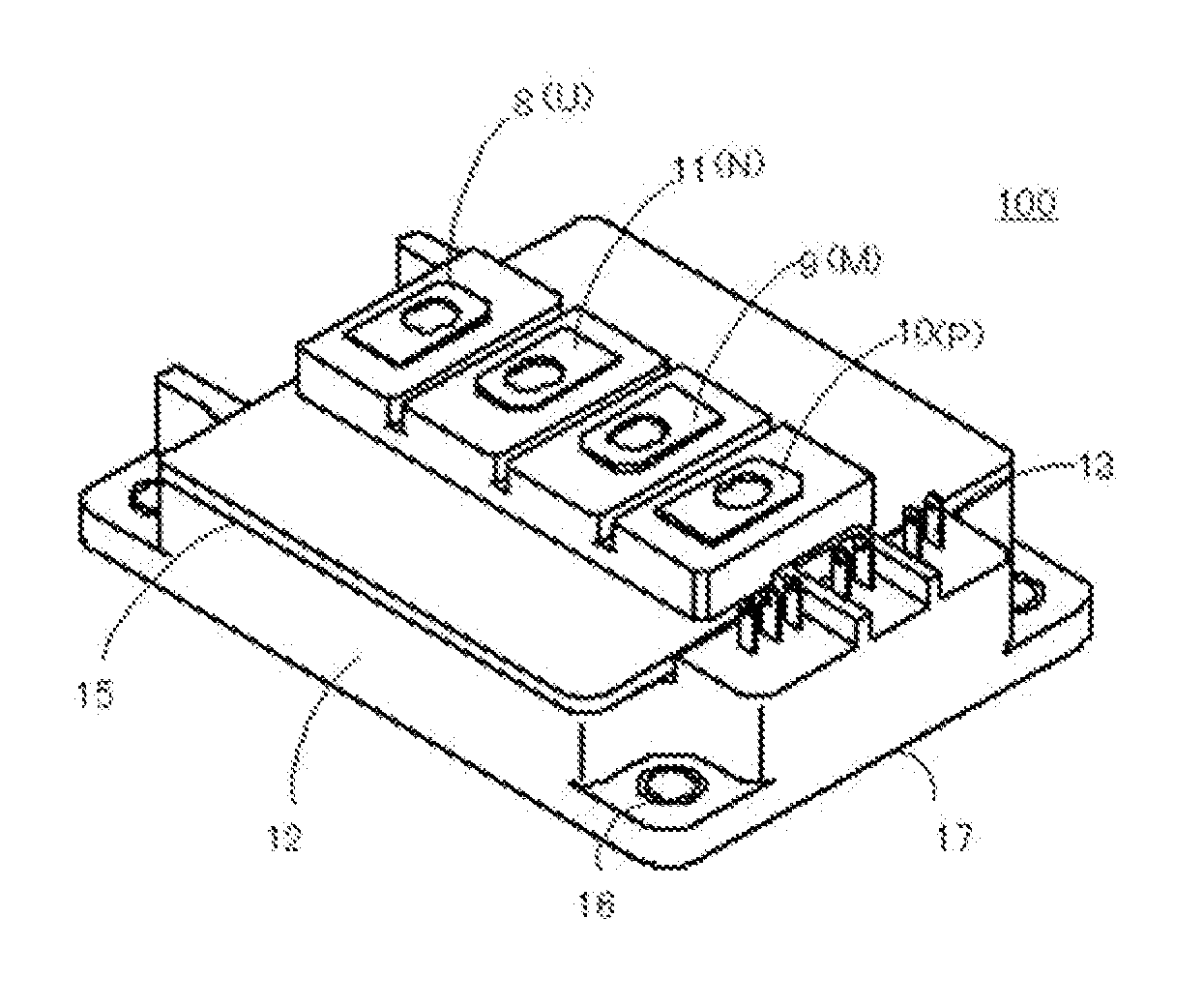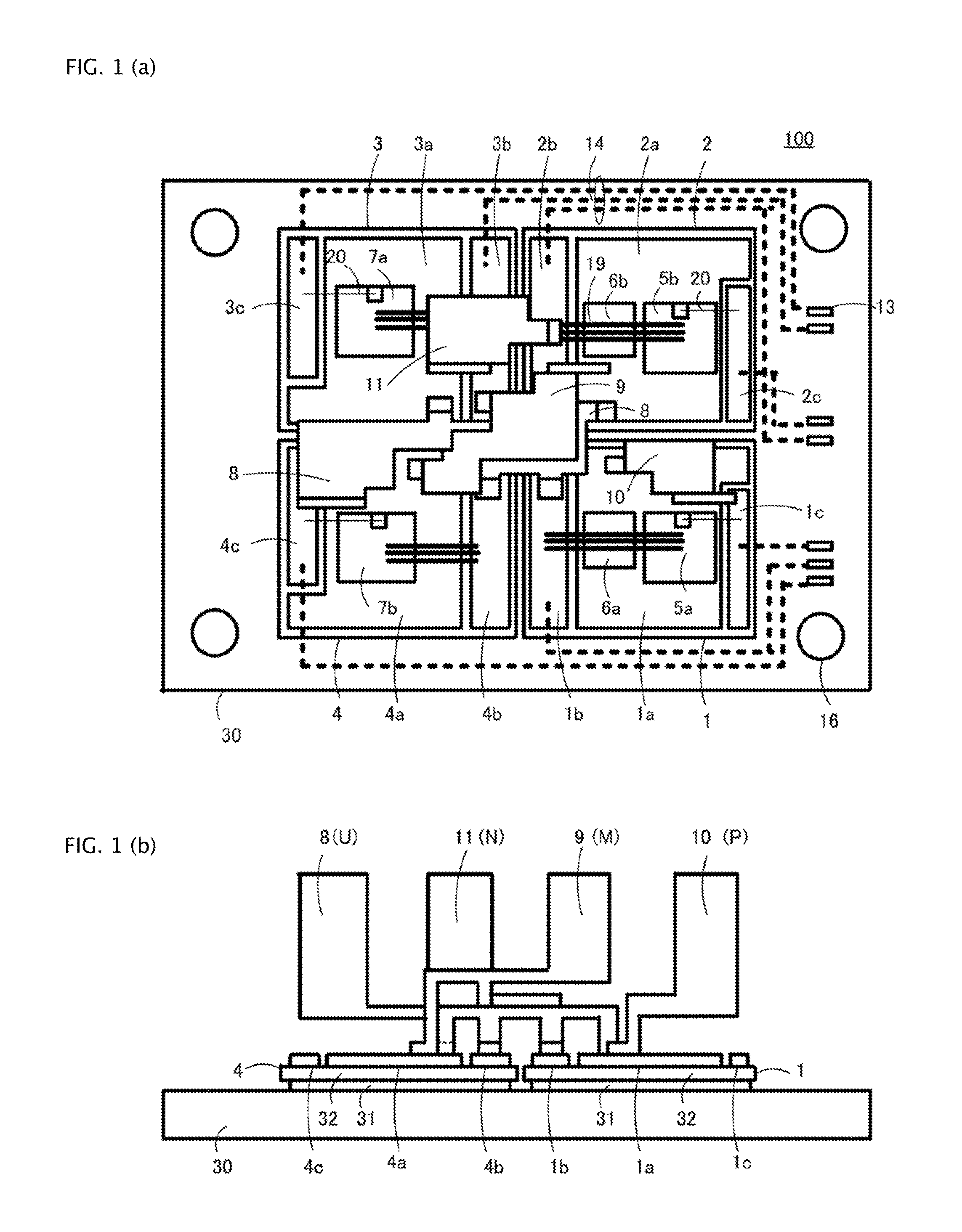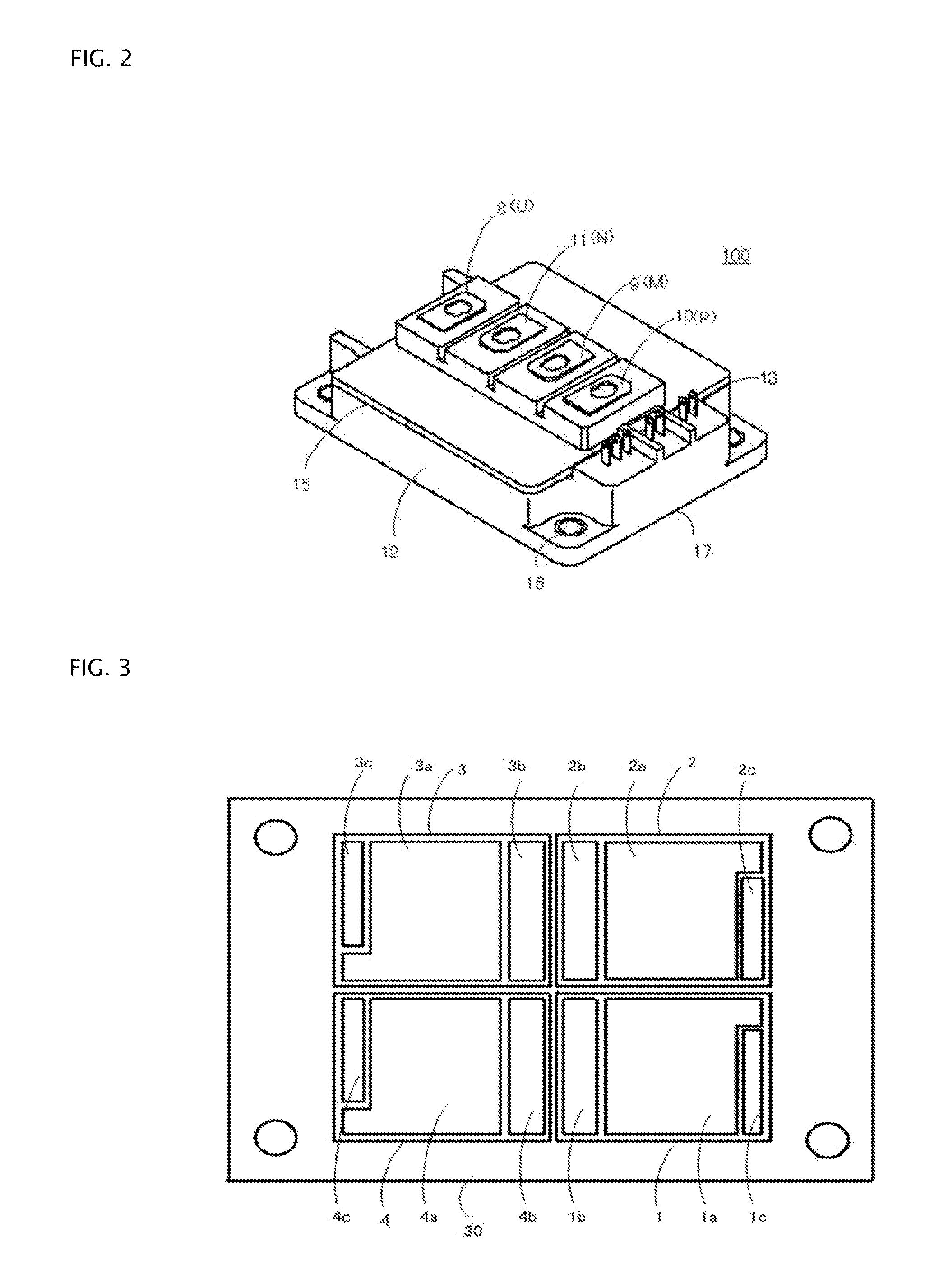Power semiconductor module
a technology of semiconductor modules and semiconductor devices, applied in the direction of power conversion systems, semiconductor devices, ac-dc conversion, etc., to achieve the effects of reducing electromagnetic noise, facilitating reducing mutual inductance, and reducing manufacturing costs
- Summary
- Abstract
- Description
- Claims
- Application Information
AI Technical Summary
Benefits of technology
Problems solved by technology
Method used
Image
Examples
first embodiment
[0075]FIG. 1(a) is the top plan view of a power semiconductor module according to a first embodiment of the invention. FIG. 1(b) is the side plan view of the power semiconductor module according to the first embodiment. In FIG. 1(b), insulated-gate bipolar transistor chips (hereinafter referred to as “IGBT chips”) and freewheel diode chips (hereinafter referred to as “FWD chips”) are not shown for the convenience of descriptions.
[0076]FIG. 2 is the isometric view of the power semiconductor module according to the first embodiment showing the external appearance thereof.
[0077]FIG. 3 is a top plan view showing a radiator plate and insulated substrates, each including an electrical-conductor pattern formed thereon.
[0078]FIG. 4 is a top plan view showing chips fixed to the electrical-conductor patterns. FIG. 5 is a top plan view showing terminals fixed to the electrical-conductor patterns. FIG. 6(a) is the top plan view of a U-terminal. FIG. 6(b) is the side plan view of the U-terminal....
second embodiment
[0127]FIG. 14(a) is the top plan view of a power semiconductor module according to a second embodiment of the invention. FIG. 14(b) is the side plan view of the power semiconductor module according to the second embodiment. FIG. 15 is the top plan view of a case showing the terminal arrangement thereon. FIG. 16 is the top plan view of the power semiconductor module according to the second embodiment describing the current paths therein. FIG. 17 is the equivalent circuit diagram that considers the chip arrangement in FIG. 14(a).
[0128]Power semiconductor module 200 shown in FIGS. 14(a) and 14(b) is the same with power semiconductor module 100 shown in FIGS. 1(a) and 1(b) in that power semiconductor module 200 employs same insulated substrates 1, 2, 3, and 4; IGBT chips 5a and 5b; FWD chips 6a and 6b; and reverse blocking IGBT chips 7a and 7b. Power semiconductor module 200 is different from power semiconductor module 100 in that U-terminal 8 is shifted to the P-terminal 10 side and co...
PUM
 Login to View More
Login to View More Abstract
Description
Claims
Application Information
 Login to View More
Login to View More - R&D
- Intellectual Property
- Life Sciences
- Materials
- Tech Scout
- Unparalleled Data Quality
- Higher Quality Content
- 60% Fewer Hallucinations
Browse by: Latest US Patents, China's latest patents, Technical Efficacy Thesaurus, Application Domain, Technology Topic, Popular Technical Reports.
© 2025 PatSnap. All rights reserved.Legal|Privacy policy|Modern Slavery Act Transparency Statement|Sitemap|About US| Contact US: help@patsnap.com



